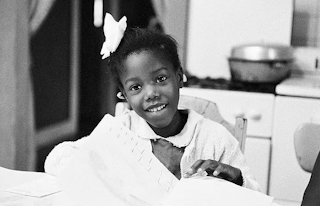
Ruby Bridges
More than a symbol for a nation. She advanced the cause of civil rights as the first African American student to integrate an elementary school in the South.
Featured lesson
Civil Rights and the Right to EducationRuby Bridges was born on September 8, 1954, in Tylertown, Mississippi, the oldest of farmers Lucille and Abon Bridges’ five children. When she was 2 years old, her family moved to New Orleans in search of a better life. Perhaps it is no coincidence that 1954 also marked Brown v. Board of Education, the U.S. Supreme Court’s landmark ruling that ended racial segregation in public schools.
Southern states continued to resist integration, and in 1959, Bridges attended a segregated New Orleans kindergarten. A year later, a federal court ordered Louisiana to desegregate. The city of New Orleans responded by creating entrance exams for African American students to see whether they could compete academically. Though Ruby was among the six students who passed the test, her parents debated sending her to the all-white William Frantz Elementary School, knowing that families and students were unlikely to welcome Blacks. But her mother convinced her father to let Ruby attend—she should have the educational opportunities that they had been denied.
Ruby Bridges and her mother were escorted by four federal marshals to the school every day that year. Crowds screamed vicious slurs at her, and she spent her first day in the principal’s office due to the chaos—angry white parents pulled their children from school, and the most ardent segregationists withdrew them permanently. Barbara Henry, a white Boston native, was the only teacher willing to accept Ruby. She was a class of one and ate lunch alone, but she never missed a day of school.
Some families supported her bravery. Others continued to protest. And the Bridges family suffered for their courage. Abon lost his job, and stores refused to sell to Lucille. Over time, other African American students enrolled. In 1964, artist Norman Rockwell celebrated Bridges’ courage with a painting entitled “The Problem We All Live With.” The iconic image shows the small girl with notebooks and ruler in hand, being led by U.S. marshals, a tomato splattered against the wall.
Bridges graduated from a desegregated high school, became a travel agent, married, and had four sons. A lifelong activist for racial equality, she established the Ruby Bridges Foundation in 1999 to promote tolerance and create change through education. The following year, she was made an honorary deputy marshal in a ceremony in Washington, D.C. She wrote about her early experiences in “Through My Eyes,” which received the Carter G. Woodson Book Award in 2000. President Bill Clinton awarded her the Presidential Citizens Medal in 2001.
A bronze statue of Bridges stands proudly in the courtyard of William Frantz Elementary School, now home to the Akili Academy. It honors the young girl who opened a door for generations of students to enter.
“Don’t follow the path. Go where there is no path and begin the trail. When you start a new trail equipped with courage, strength and conviction, the only thing that can stop you is you.”
Help Us Protect Human Rights
Please give now. Your contribution will make a difference in the critical effort to achieve equal rights for all.